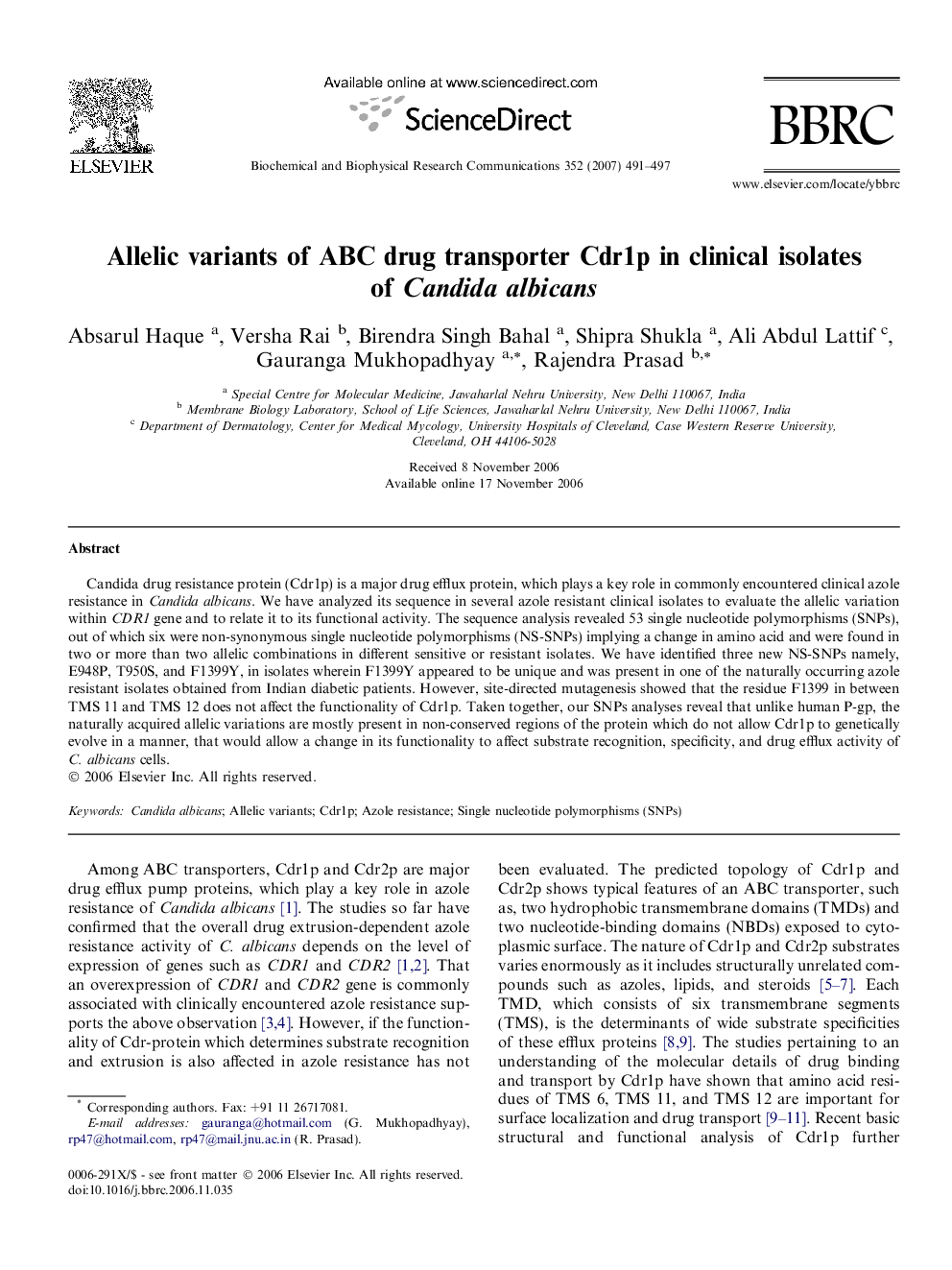| Article ID | Journal | Published Year | Pages | File Type |
|---|---|---|---|---|
| 10767595 | Biochemical and Biophysical Research Communications | 2007 | 7 Pages |
Abstract
Candida drug resistance protein (Cdr1p) is a major drug efflux protein, which plays a key role in commonly encountered clinical azole resistance in Candida albicans. We have analyzed its sequence in several azole resistant clinical isolates to evaluate the allelic variation within CDR1 gene and to relate it to its functional activity. The sequence analysis revealed 53 single nucleotide polymorphisms (SNPs), out of which six were non-synonymous single nucleotide polymorphisms (NS-SNPs) implying a change in amino acid and were found in two or more than two allelic combinations in different sensitive or resistant isolates. We have identified three new NS-SNPs namely, E948P, T950S, and F1399Y, in isolates wherein F1399Y appeared to be unique and was present in one of the naturally occurring azole resistant isolates obtained from Indian diabetic patients. However, site-directed mutagenesis showed that the residue F1399 in between TMS 11 and TMS 12 does not affect the functionality of Cdr1p. Taken together, our SNPs analyses reveal that unlike human P-gp, the naturally acquired allelic variations are mostly present in non-conserved regions of the protein which do not allow Cdr1p to genetically evolve in a manner, that would allow a change in its functionality to affect substrate recognition, specificity, and drug efflux activity of C. albicans cells.
Keywords
Related Topics
Life Sciences
Biochemistry, Genetics and Molecular Biology
Biochemistry
Authors
Absarul Haque, Versha Rai, Birendra Singh Bahal, Shipra Shukla, Ali Abdul Lattif, Gauranga Mukhopadhyay, Rajendra Prasad,
